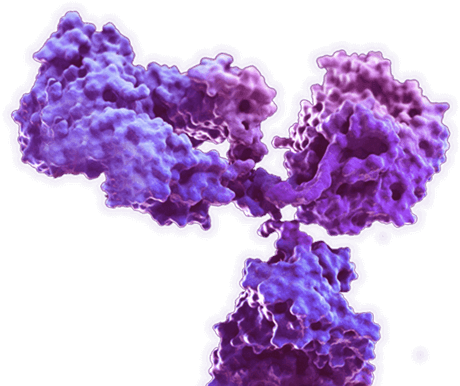AibGenesis™ Mouse Anti-ATG4 Antibody (CBMOAB-00392CR)
Cat: CBMOAB-00392CR

Certificate of Analysis Lookup
To download a Certificate of Analysis, please enter a lot number in the search box below. Note: Certificate of Analysis not available for kit components.
Lot Number
To download a Certificate of Analysis, please enter a lot number in the search box below. Note: Certificate of Analysis not available for kit components.
Lot Number
- Product List
- Specifications
- Application Information
- Target
Specifications
| Host species | Mouse (Mus musculus) |
| Species Reactivity | Yeast, A. thaliana (Arabidopsis thaliana) |
| Clone | MO00392CR |
| Specificity | This antibody binds to Yeast ATG4. |
| Format | Liquid or Lyophilized |
| Storage | Store at 4°C: short-term (1-2weeks) Store at -20°C: long-term and future use |
| Purity | > 90% was determined by SDS-PAGE |
| Purification | Purified with Protein A or G affinity chromatography |
| Cellular Localization | Nucleus; Other locations; Cytosol |
Application Information
| Application | WB, ELISA |
| Application Notes | ELISA: 1:1000-1:3000 Other applications are to be developed. The optimal dilution should be determined by the end user. |
Target
| Product Overview | Mouse Anti-Yeast ATG4 Antibody is a mouse antibody against ATG4. It can be used for ATG4 detection in Western Blot, Enzyme-Linked Immunosorbent Assay. |
| Alternative Names | Cysteine protease ATG4; EC 3.4.22; Autophagy-related protein 4; ATG4; APG4 AUT2; YNL223W |
| UniProt ID | P53867 |
| Protein Refseq | The length of the protein is 494 amino acids long. The sequence is show below: MQRWLQLWKMDLVQKVSHGVFEGSSEEPAALMNHDYIVLGEVYPERDEESGAEQCEQDCRYRGEAVSDGFLSSLFGREISSYTKEFLLDVQSRVNFTYRTRFVPIARAPDGPSPLSLNLLVRTNPISTIEDYIANPDCFNTDIGWGCMIRTGQSLLGNALQILHLGRDFRVNGNESLERESKFVNWFNDTPEAPFSLHNFVSAGTELSDKRPGEWFGPAATARSIQSLIYGFPECGIDDCIVSVSSGDIYENEVEKVFAENPNSRILFLLGVKLGINAVNESYRESICGILSSTQSVGIAGGRPSSSLYFFGYQGNEFLHFDPHIPQPAVEDSFVESCHTSKFGKLQLSEMDPSMLIGILIKGEKDWQQWKLEVAESAIINVLAKRMDDFDVSCSMDDVESVSSNSMKKDASNNENLGVLEGDYVDIGAIFPHTTNTEDVDEYDCFQDIHCKKQKIVVMGNTHTVNANLTDYEVEGVLVEKETVGIHSPIDEKC. |
For Research Use Only | Not For Clinical Use.
Online Inquiry

